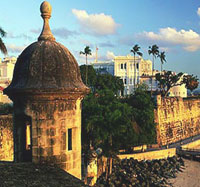While the role of people of African descent in Latin America's colonization "is relatively well-known," Peter Gerhard once noted, "it is for the most part an impersonal history." Gerhard's brief biographical essay on Juan Garrido, "A Black Conquistador in Mexico," was his contribution to the personalization of black history in Spanish America.More than two decades later, that process of personalization--and contextualization--still has a long way to go.
This article places Juan Garrido in the specific biographical context of black conquistadors who fought and settled in other regions of Spanish America--from Yucatan to Chile--and in the broader historical context of the black experience in Spanish America (see the articles that follow in this issue of The Americas).
The sources for this endeavor are a combination of primary material, mostly the genre of colonial "chronicles" but including a few archival items, and secondary works, some pre-dating Gerhard's essay but some representing recent work.
The article's purpose is thus,
first,...... to marshal the widely scattered evidence on the topic with a view to making the broad and simple--but hitherto inadequately substantiated if not marginalized --point that Africans were a ubiquitous and pivotal part of Spanish conquest campaigns in the Americas;
second......, to articulate whatever patterns are visible in black conquest roles and to locate African participation in the phases of Spanish expansion;
third, .....to argue that such roles should be seen in a longer-term colonial context whose most notable features were the existence of black militias and individuals whom have been termed black counter-conquistadors.


